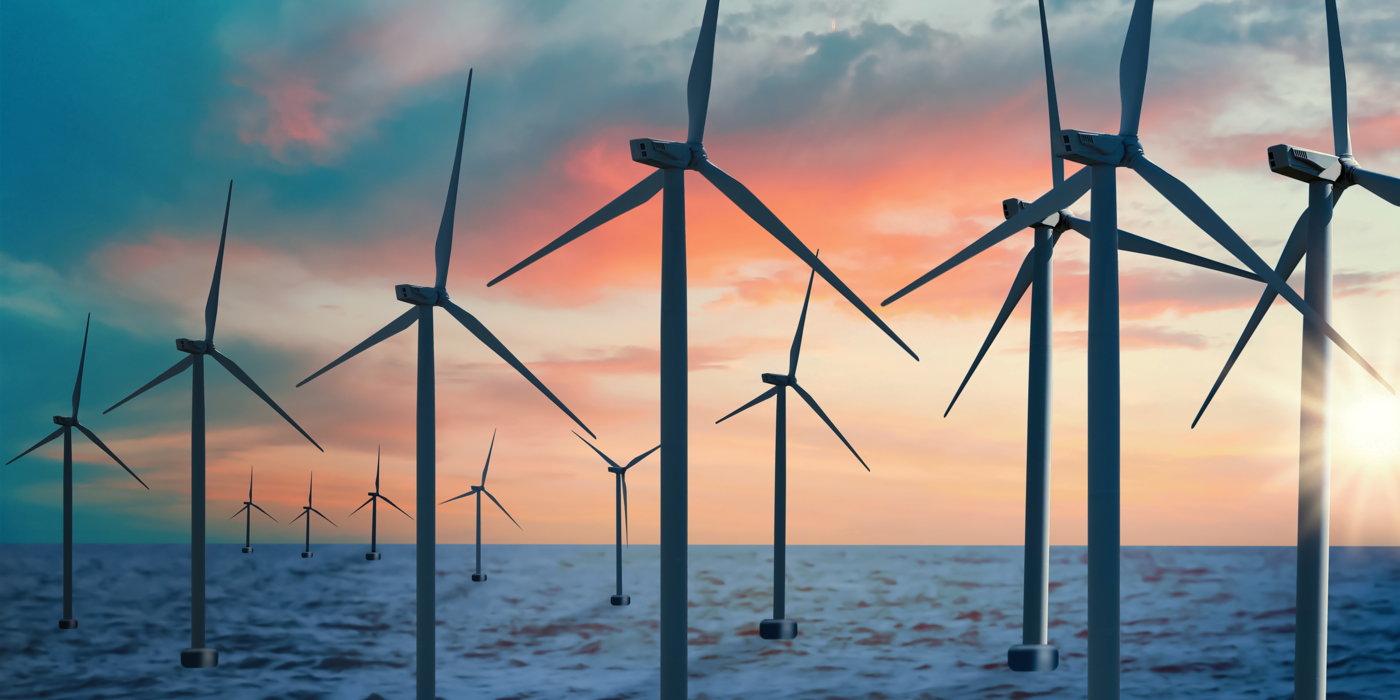Offshore Wind Farm Economics: A Turning Point For The Industry?

Table of Contents
Decreasing Capital Costs and Technological Advancements
One of the most significant drivers of the positive shift in offshore wind farm economics is the dramatic reduction in capital costs. Turbine costs, a major component of overall project expenses, have fallen significantly over the past decade. This reduction is attributable to several factors, including:
- Economies of scale: Improved manufacturing processes and increased production volumes have led to significant economies of scale, bringing down the cost per unit.
- Technological advancements: Larger turbine capacities and improved aerodynamic designs have increased energy generation per turbine, boosting overall project efficiency and lowering the cost per megawatt-hour (MWh). Advancements in blade design, gearboxes, and generators also contribute to increased lifespan and reduced maintenance costs.
- Innovation in construction and installation: New techniques and specialized vessels have streamlined the construction and installation process, reducing project timelines and associated labor costs. This includes improvements in foundation design and installation methods for both fixed-bottom and floating offshore wind turbines.
Here's a breakdown of key technological advancements:
- Improved manufacturing processes lead to economies of scale.
- Development of floating offshore wind technology opens up new areas, previously inaccessible due to water depth limitations. This significantly expands the potential geographical reach of offshore wind farms.
- Technological advancements in energy storage solutions, such as battery technology, are improving grid stability and enabling the integration of larger amounts of intermittent renewable energy.
Government Policies and Subsidies
Government support plays a pivotal role in shaping the landscape of offshore wind farm economics. Various policies and subsidies are instrumental in driving offshore wind development and making projects financially viable. These include:
- Tax credits and exemptions: Reducing the tax burden on developers can significantly lower project costs and increase investor appeal.
- Feed-in tariffs (FITs): Guaranteed prices for the electricity generated, providing a stable revenue stream for project developers.
- Renewable portfolio standards (RPS) and mandates: Government-imposed targets for renewable energy penetration in the electricity mix, creating a guaranteed market demand for offshore wind power.
- Carbon pricing mechanisms: Putting a price on carbon emissions makes renewable energy sources, such as offshore wind, more competitive compared to fossil fuel-based alternatives.
Examples of successful government support programs:
- The UK's Contracts for Difference (CfD) scheme has successfully driven down offshore wind costs through competitive auctions.
- The US Inflation Reduction Act includes significant tax credits for renewable energy projects, including offshore wind.
- Many European countries have implemented robust support schemes, fostering significant growth in their offshore wind sectors.
Policy stability is crucial for attracting long-term investment in offshore wind projects. Clear and consistent government policies reduce uncertainty and risk, making it easier for developers to secure financing and proceed with project development. Auction mechanisms, where developers bid for the right to build offshore wind farms, promote competition and drive down costs.
Grid Connection and Infrastructure Development
The successful integration of offshore wind farms into the electricity grid is paramount. Connecting offshore wind farms to the mainland grid presents significant challenges and costs. These include:
- Cable laying: Laying high-voltage cables across long distances underwater represents a substantial cost.
- Substation construction: Onshore substations are needed to convert the electricity from offshore wind farms into the appropriate voltage for transmission to the grid.
- Grid congestion: Existing grid infrastructure may not have the capacity to handle the large influx of power from new offshore wind farms.
Innovative solutions are being developed to address these challenges:
- High-Voltage Direct Current (HVDC) transmission technology enables efficient long-distance power transmission, reducing transmission losses and costs.
- Smart grid technologies enhance grid management and integration of renewable energy sources, including offshore wind farms.
- Strategic grid upgrades and expansions are vital to ensure sufficient capacity to accommodate future offshore wind power generation.
The Role of Financing and Investment
The increasing attractiveness of offshore wind projects to investors is another crucial aspect of offshore wind farm economics. Several factors are contributing to this trend:
- Decreased risk profiles: Technological advancements and supportive government policies have significantly reduced the perceived risks associated with offshore wind projects.
- Attractive returns on investment: Offshore wind projects offer competitive returns compared to other energy sectors, drawing significant interest from institutional investors.
- ESG factors: Environmental, Social, and Governance (ESG) considerations are becoming increasingly important for investors, and offshore wind aligns perfectly with these criteria.
Different financing models are employed, including project finance, where banks and other financial institutions provide debt financing based on the project's cash flows, and equity investment, where investors directly purchase ownership stakes in the project. The involvement of institutional investors, such as pension funds and insurance companies, is vital in securing the substantial capital required for these large-scale projects.
The Future of Offshore Wind Farm Economics
The future of offshore wind farm economics looks extremely promising. Further cost reductions, technological advancements, and supportive policies are expected to drive significant growth in the industry.
- Continued cost reductions: Economies of scale, technological innovation, and increased competition will continue to drive down the cost of offshore wind energy.
- Emerging technologies: Floating offshore wind technology will unlock new areas for development, while hybrid energy systems combining offshore wind with other renewable energy sources will enhance grid stability and reliability.
- Capacity growth: Predictions suggest a massive increase in global offshore wind capacity in the coming decades, making it a major player in the global energy mix.
The potential for offshore wind to become a cost-competitive energy source is substantial. Continuous innovation and investment will be crucial in sustaining this growth trajectory, ensuring a secure and sustainable energy future.
Conclusion: Offshore Wind Farm Economics – A Promising Future
In conclusion, the positive shift in offshore wind farm economics, driven by decreasing capital costs, technological advancements, supportive government policies, and increasing investor interest, points towards a significant turning point for the industry. The economic benefits are substantial, with long-term opportunities for investment, job creation, and a cleaner energy future. Explore the exciting world of offshore wind farm economics and learn how you can participate in this rapidly growing and sustainable energy sector. Discover the potential for investment and innovation in offshore wind energy projects. Invest in the future of renewable energy by exploring the opportunities within offshore wind farm economics.

Featured Posts
-
 Ufc 314 Co Main Event Prediction Analyzing Chandler Vs Pimblett
May 04, 2025
Ufc 314 Co Main Event Prediction Analyzing Chandler Vs Pimblett
May 04, 2025 -
 Ao Vivo Corinthians X Palmeiras Horario Transmissao E Escalacoes
May 04, 2025
Ao Vivo Corinthians X Palmeiras Horario Transmissao E Escalacoes
May 04, 2025 -
 Mother Indicted For Criminal Neglect In 16 Year Olds Torture Murder Case
May 04, 2025
Mother Indicted For Criminal Neglect In 16 Year Olds Torture Murder Case
May 04, 2025 -
 Bradley Cooper Directs Will Arnett On Is This Thing On Nyc Set Photos
May 04, 2025
Bradley Cooper Directs Will Arnett On Is This Thing On Nyc Set Photos
May 04, 2025 -
 Bakole Presents A Tough Test For Joseph Parker
May 04, 2025
Bakole Presents A Tough Test For Joseph Parker
May 04, 2025
